Brownsville/Rio Grande Valley, TX
Weather Forecast Office
| Average and Median Rainfall for Lower RGV Stations La Niña and 30–Year Averages Shown |
|
|
Average and Median Rainfall for Brownsville, Harlingen, and McAllen (All La Niñas) Accumulated rainfall totals for three month intervals are shown. For example, "OND" shows the average rainfall for October through December, "NDJ" shows the average rainfall from November through January, etc. Rainfall values inside each solid bar are for either the 1971 to 2000 period (averages) or for the station period of record (medians); accumulations inside each shaded bar of the chart are for La Niña years. Click on each graphic for a full size image. |
|
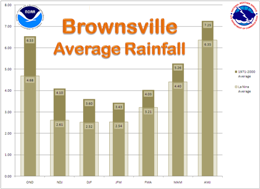 |
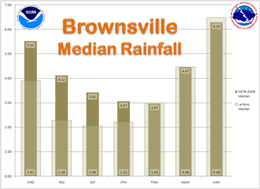 |
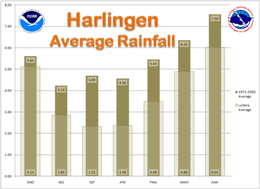 |
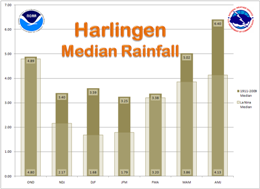 |
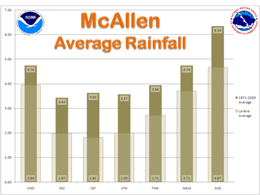 |
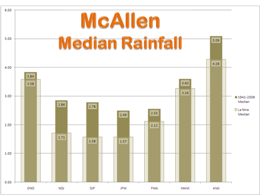 |
|
Average and Median Rainfall for Brownsville, Harlingen, and McAllen (Strong La Niñas) |
|
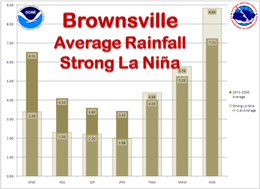 |
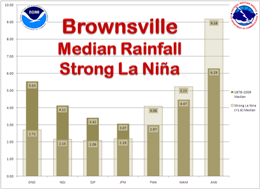 |
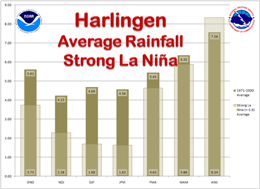 |
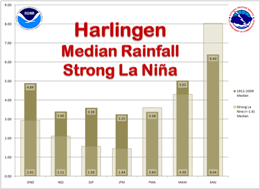 |
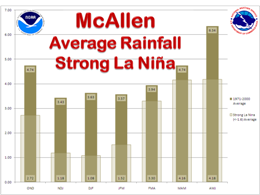 |
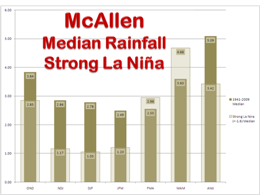 |
| Return to Article | |
CURRENT HAZARDS
Daily Briefing (National)
Outlooks
Severe Weather Text
Local Storm Report
Submit a Storm Report
CURRENT CONDITIONS
Surface Observations (map)
Text Observations
Satellite
Rivers and Lakes
Observed Precip - RGV
Tides and Currents
CoCoRaHS Texas
FORECASTS
Forecaster's Discussion
Graphical
Hourly View
Activity Planner
Marine
South Padre Tides
Wave Prediction
Beach
Surf
Fire Weather
Aviation
Tropical
Winter Storm Severity Index
Model Guidance
US Dept of Commerce
National Oceanic and Atmospheric Administration
National Weather Service
Brownsville/Rio Grande Valley, TX
20 S. Vermillion Avenue
Brownsville, TX 78521
956-504-1432 (8 AM to 430 PM Mon-Fri)
Comments? Questions? Please Contact Us.

